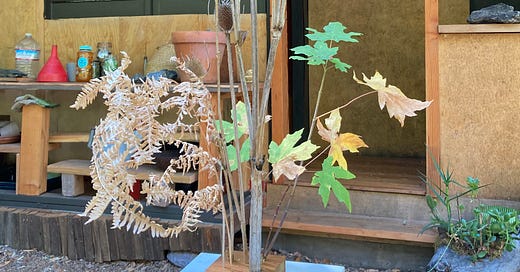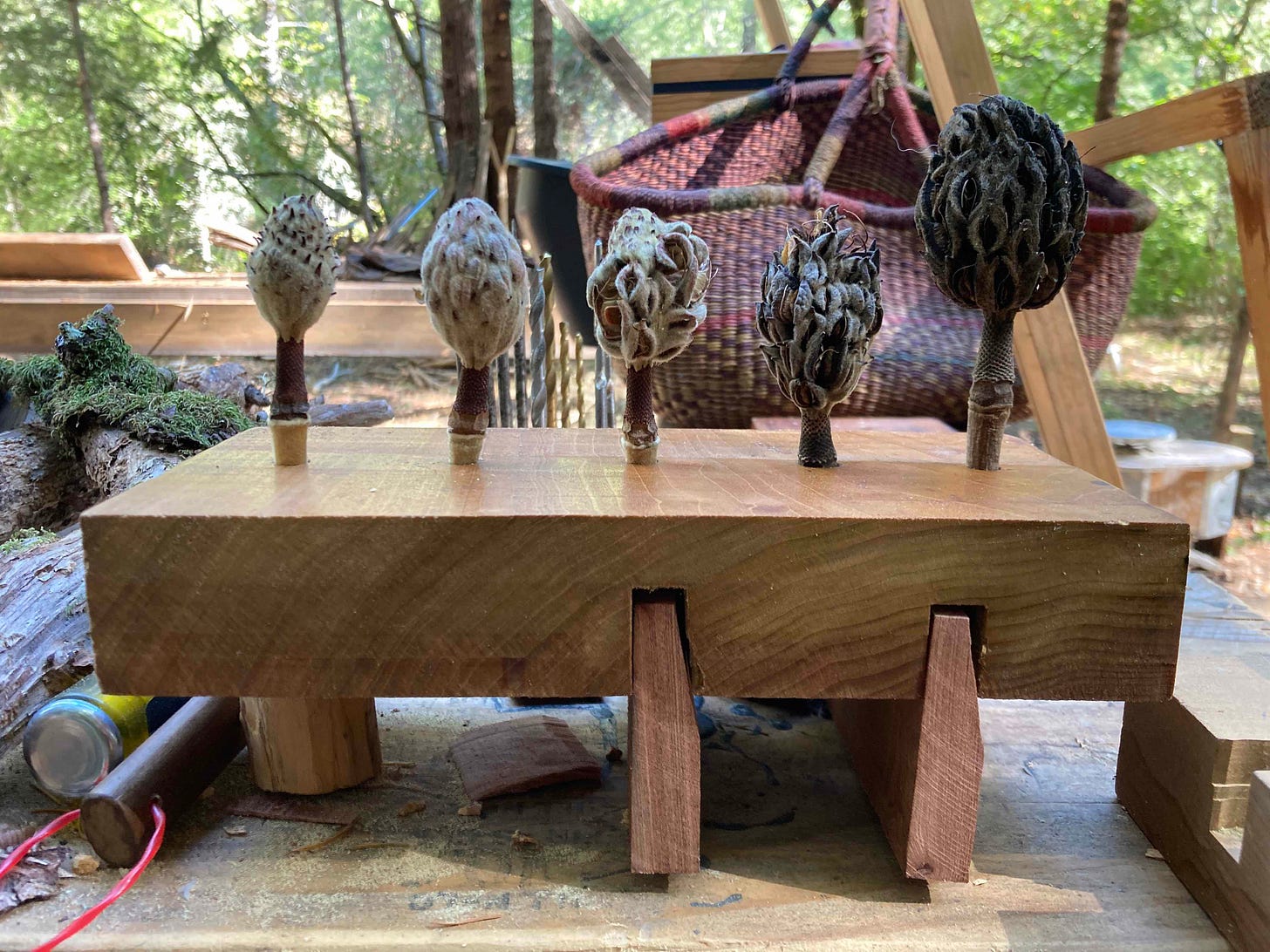Punk Ikebana
I don’t know anything formal about Ikebana, except that when I see it I usually like it. I am generally in admiration of the Japanese aesthetic and design arts. Ikebana is the Japanese art of flower arranging, which translates as 'flowers kept alive'. A 600-year old tradition, emphasizing process as much as product, it dwells on our relationship with the Living World. While this often translates into a sort of minimalism, it is really a way to alchemize and distill the beauty of nature into a flower arrangement.
This is a good time of year to be outside. The landscape is bright with turning foliage, plants are naturally drying out here at the end of the summer. There are intricate and interesting architectural forms– spikes that look like medieval weapons, ferns that resemble lace, the austere architecture of Queen Anne’s Lace, the strange effulgence of mushrooms.
I would love to have more formal training in Ikebana, but I’m not absolutely sure it is necessary. The 7 principles of Ikebana provide a thorough roadmap.1
Silence utilizes the Japanese concept of negative space, or ma 間.
Minimalism serves to convey a sense of beauty by only using the most essential forms and avoiding unnecessary ornamentation.
Shape and Line is used in the same way it's used in all art, to convey a sense of balance and movement.
Form stresses the importance of creating a harmonious sculpture with consideration of its overall cohesion.
Humanity is used to invoke a feeling through the arrangement, the most common being 'living in the moment.'
Aesthetics highlight the importance of beauty and aesthetic harmony and encourages practitioners to consider color, texture, and spatial relationships in their arrangement.
Structure reflects the idea that a well-structured composition contributes to the overall impact and longevity of the arrangement.
Ok, make sense to me. The tools you will need?
The answer to this depends on what is available in the living world, and how you will mount it, I suppose. In my case, shears, saws, drills, wood– and materials. Materials such as what? Well– forage, my friends. Go outside and look around. What natural and living materials are available at this season where you are? And then explore the meditative encounter you might have between natural form, and the seven principles of Ikebana.
Here are a collection of magnolia buds, harvested in varying degrees of ripeness from the ground. Everything in this sculpture (or arrangement) is recycled, salvaged, or repurposed. From the stand, which was a left-over section of a much larger piece, to the redwood fins, to the buds themselves, picked up off the ground.
Keep reading with a 7-day free trial
Subscribe to Restorative Practices to keep reading this post and get 7 days of free access to the full post archives.







